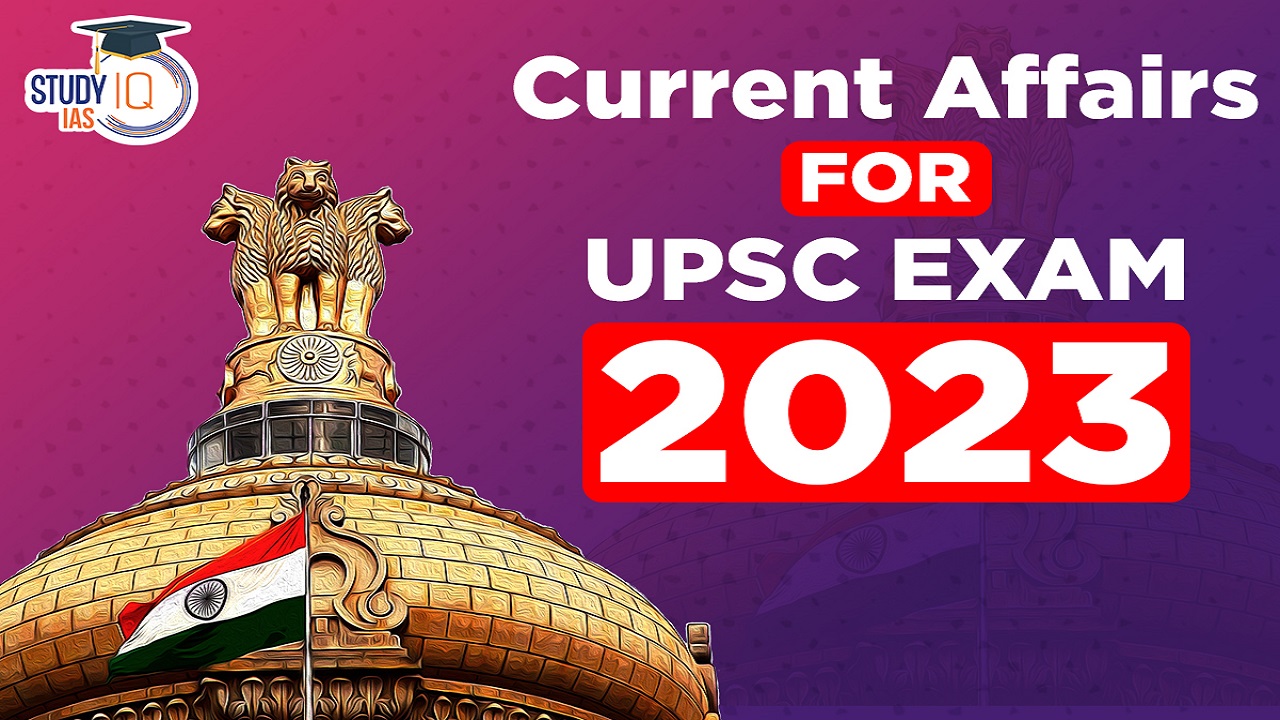Current Affairs 16th September 2023 for UPSC Prelims Exam
OIML Certificates
Context: India has become an OIML certificate-issuing authority.
What is the OIML?
- The OIML stands for International Organisation of Legal Metrology.
- Established in 1955 and headquartered in Paris, the OIML is an international standard-setting body.
- It develops model regulations, standards and related documents for use by legal metrology authorities and industry.
- It plays a crucial role in harmonizing national laws and regulations on the performance of measuring instruments like clinical thermometers, alcohol breath analyzers, radar speed measuring instruments, ship tanks found at ports, and petrol dispensing units.
- India became a member of the OIML in 1956. In the same year, India signed the metric convention.
About the OIML certificates
- The OIML-CS is a system for issuing, registering and using OIML certificates, and their associated OIML type evaluation/test reports, for instruments like digital balance, clinical thermometers, etc.
- With the addition of India, the number of countries authorised to issue OIML certificates has increased to 13.
- The move is expected to help the Indian economy in several ways, including an increase in exports, earning of foreign exchange, and generation of employment.
Current Affairs 14th September 2023 for UPSC Prelims Exam
Ayushman Bharat
Context: The AB-PMJAY Scheme is being projected as a huge success that has taken India closer to universal health coverage, one of the sustainable development goals.
About Ayushman Bharat Scheme
- Ayushman Bharat: Ayushman Bharat, a flagship scheme of Government of India, was launched in 2018 as recommended by the National Health Policy 2017.
- It aims to achieve the vision of Universal Health Coverage (UHC).
- This initiative has been designed to meet Sustainable Development Goals (SDGs) and its underlining commitment, which is to “leave no one behind.”
- Components: It has two inter-related components:
- Health and Wellness Centres (HWCs) and
- Pradhan Mantri Jan Arogya Yojana (PM-JAY).
- AB-HWCs: It is aimed at bringing in promotive, preventive, curative, palliative and rehabilitative aspects of universal health coverage.
- These Centres deliver Comprehensive Primary Health Care (CPHC) bringing healthcare closer to the homes of people.
- They cover both, maternal and child health services and non-communicable diseases, including free essential drugs and diagnostic services.
- PM-JAY: Ayushman Bharat PM-JAY is the largest health assurance scheme in the world.
- PM-JAY was earlier known as the National Health Protection Scheme (NHPS) before being rechristened.
- Implementing Agency: National Health Authority (NHA) has been set up to implement PM-JAY.
- Beneficiaries: The households included are based on the deprivation and occupational criteria of Socio-Economic Caste Census 2011 (SECC 2011) for rural and urban areas respectively.
- Funding: PM-JAY is fully funded by the Government and cost of implementation is shared between the Central and State Governments.
- Features:
- It provides a cover of Rs. 5 lakhs per family per year for secondary and tertiary care hospitalization across public and private empanelled hospitals in India.
- Over 12 crore poor and vulnerable entitled families (approximately 55 crore beneficiaries) are eligible for these benefits.
- PM-JAY provides cashless access to health care services for the beneficiary at the point of service, that is, the hospital.
- PM-JAY envisions to help mitigate catastrophic expenditure on medical treatment which pushes nearly 6 crore Indians into poverty each year.
- It covers up to 3 days of pre-hospitalization and 15 days post-hospitalization expenses such as diagnostics and medicines.
- There is no restriction on the family size, age or gender.
- Benefits of the scheme are portable across the country i.e. a beneficiary can visit any empanelled public or private hospital in India to avail cashless treatment.
- Services include approximately 1,929 procedures covering all the costs related to treatment, including but not limited to drugs, supplies, diagnostic services, physician’s fees, room charges, surgeon charges, OT and ICU charges etc.
- Public hospitals are reimbursed for the healthcare services at par with the private hospitals.
Defence Acquisition Council (DAC)
Context: The Defence Acquisition Council has recently approved procurement of 12 Su-30MKI jets for the Indian Air Force (IAF).
About Defence Acquisition Council (DAC)
- Definition: The Defence Acquisition Council is the highest decision-making body in the defence ministry for deciding on new policies and capital acquisitions for the three services and the Indian Coast Guard.
- Aim: To ensure expeditious procurement of the approved requirements of the armed forces.
- Composition:
- Chairman: The defence minister is the chairman of DAC.
- Members: Its members include the Chief of Defence Staff (CDS) and chiefs of the Army, Navy, and Air Force.
- Functions:
- Accord of acceptance of necessity to acquisition proposals.
- Categorization of the acquisition proposals relating to ‘Buy’, ‘Buy & Make’, and ‘Make’.
- Look into issues relating to single vendor clearance.
- Take decisions regarding ‘offset’ provisions in respect of acquisition proposals above Rs 300 crore.
- Take decisions regarding the Transfer of Technology under the ‘Buy & Make’ category of acquisition proposals.
- Field trial evaluation.
GST Appellate Tribunal
Context: The Finance Ministry has notified the constitution of 31 Appellate Tribunals across 28 States and eight Union Territories for the Goods and Services Tax (GST).
About GST Appellate Tribunal
- Definition: GSTAT will be the first joint forum at which the dispute resolution process will converge for all GST laws and both tax administrations, that is, Central and state tax.
- The Centre and states shall have equal representation.
- Need:
- Interpretational Challenges: Since the introduction of GST in July 2017, GST law has been subjected to divergent interpretations by the taxpayers as well as the authorities.
- It led to numerous disputes mainly in the context of the levy, valuation, classification, creditability (including transitional credits), and refunds.
- Lack of Specialized Benches: In the absence of GST Appellate Tribunals, taxpayers have often been invoking writ jurisdiction to seek relief from High Courts.
- Without an ultimate fact-finding authority in the form of GSTAT in place, knocking on the doors of High Courts is not viable.
- Also, these High Courts may not have specialized Benches to deal with GST matters, or simply cannot accommodate the matters on the Board expeditiously, due to the pending backlog.
- Judicial Pendency: Given the pendency of matters, the constitution of the GST Appellate Tribunal (GSTAT) has been much awaited in recent years for judicious disposal of cases.
- Difficulties Faced by Aggrieved Taxpayers: In the absence of Tribunal, the aggrieved taxpayer has no option but to wait for justice, while the revenue authorities press aggressively for implementation of their own orders.
- Interpretational Challenges: Since the introduction of GST in July 2017, GST law has been subjected to divergent interpretations by the taxpayers as well as the authorities.
- Tentative Composition:
- Benches: The GST Tribunal will have one principal bench in New Delhi and as many benches or boards in States as decided by each State, subject to approval of the Council.
- Members: As per the original provisions under Section 109 of the CGST Act, the national bench and each regional bench of the tribunal would consist of one judicial member, one technical member (Centre) and one technical member (State).
- Search-cum-Selection Committee: Section 110 (4)(a) and (b) of the Act provide for the Search-cum-Selection Committee for technical member (State) of a State Bench.
- Such a committee will be headed by the Chief Justice of the high court in the case of technical member (State) and the CJI for all other cases. This will ensure transparency in the selection process.
- Tenure: The CGST Act provides for a member’s tenure to last four years with a provision of a two-year extension.
- This accounts for sufficient time for members to perform their duties and to ensure the availability of suitable replacements.


 How African Reserves Eliminated Rhino Po...
How African Reserves Eliminated Rhino Po...
 Why India Needs Its Own Economic Model?
Why India Needs Its Own Economic Model?
 Challenges in India’s Airline Sector: ...
Challenges in India’s Airline Sector: ...

























